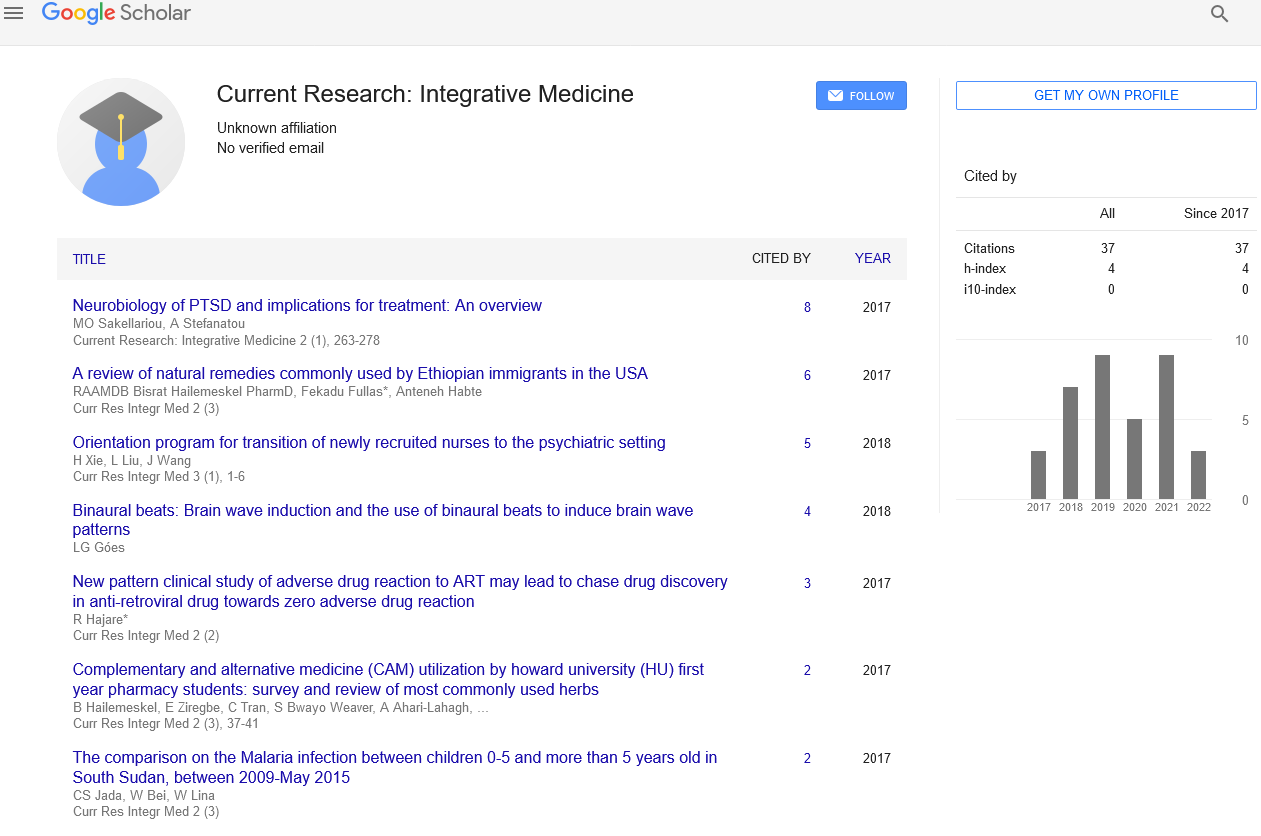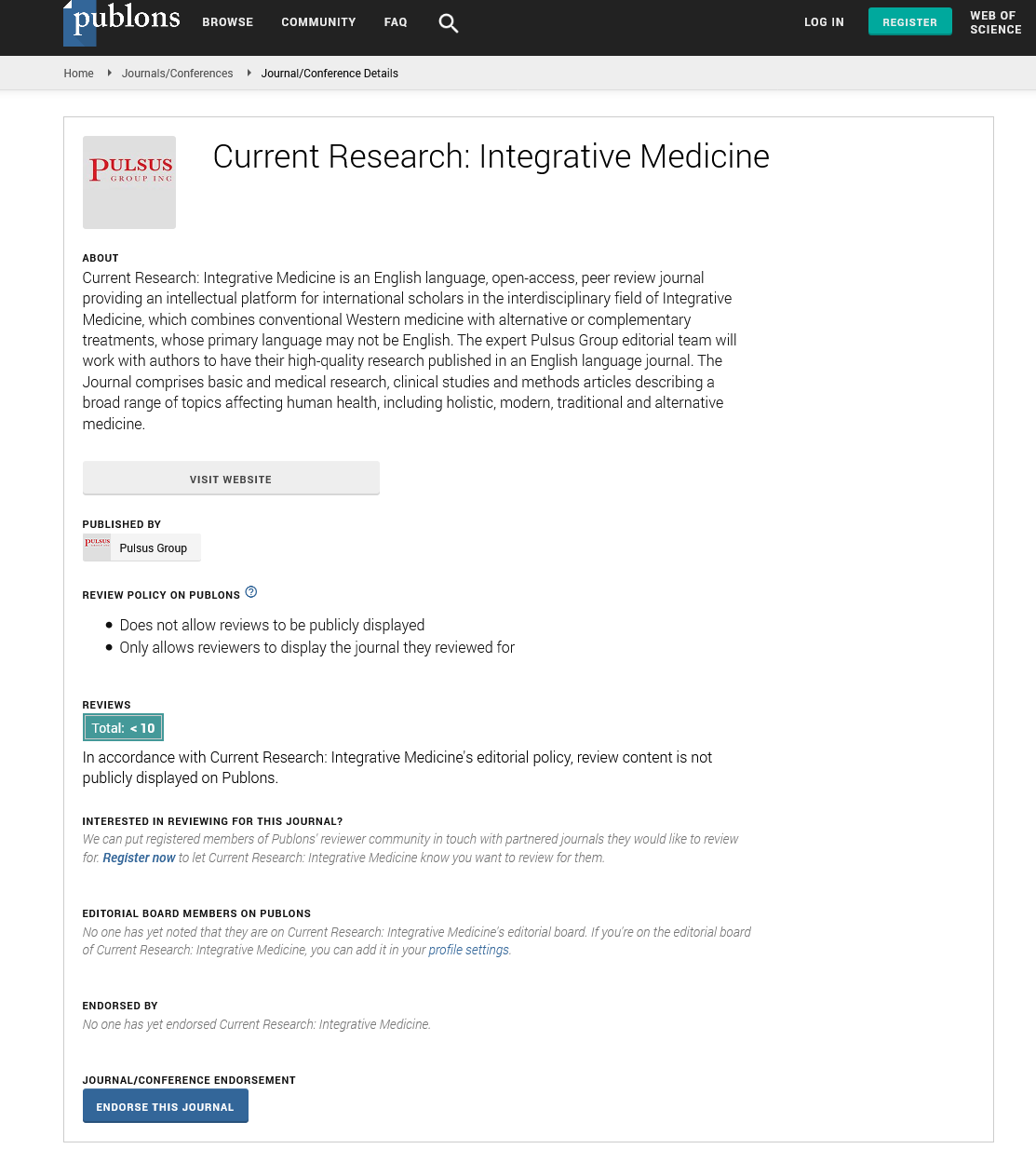Self-assembled betulinic acid: A better alternative form of betulinic acid for anticancer therapy
Received: 26-Oct-2018 Accepted Date: Nov 05, 2018; Published: 12-Nov-2018
Citation: Dash SK, Giri B. Self-assembled betulinic acid: A better alternative form of betulinic acid for anticancer therapy. J Exp Med Biol. 2018;1(1):1-2.
This open-access article is distributed under the terms of the Creative Commons Attribution Non-Commercial License (CC BY-NC) (http://creativecommons.org/licenses/by-nc/4.0/), which permits reuse, distribution and reproduction of the article, provided that the original work is properly cited and the reuse is restricted to noncommercial purposes. For commercial reuse, contact reprints@pulsus.com
Cancer is the second leading cause of death worldwide. In United States it was estimated that 609,640 peoples will suffering from cancer with 1,735,350 new cases in 2018. [1]. Lung cancer is the leading cancer among men whereas breast cancer followed as second among women [1]. Leukemia is the third most leading cancer type. Malignancy occurring in myeloid cells i.e granulocytes (neutrophils, basophils, and eosinophils) and monocytes /macrophages leads to the development of myeloid leukemia whereas malignancy in T and B lymphocytes develops lymphocytic leukemia [2]. There are four major types of leukemic that includes AML (acute myeloid leukemia), CML (chronic myeloid leukemia), ALL (acute lymphoblastic leukemia) and CLL (chronic lymphocytic leukemia). AML is relatively produces immature, nonfunctional circulating cells (called blast) and mainly found in the elderly peoples. The CML is characterized by the balanced reciprocal translocation of c-abl protooncogene from chromosome 9 to the break point cluster region of Bcr gene on chromosome 22 [3]. This phenomenon leads to the formation of the Philadelphia chromosome (Ph chromosome). The BCR-ABL tyrosine kinase activity due to Ph chromosome contributes to achieve the resistance property against a wide range of available anticancer agents by expressing multiple genes in CML. The body produces large numbers of relatively matured but still abnormal circulating white blood cells (myelocytes) in CML [4].
Several anti-leukemic drugs are available for the management of various types of leukemia but their success rate and overall efficacy are still not entirely satisfactory. Moreover the widely applied anti-leukemic drugs like Fludarabine (Fludara), Mitoxantrone, Etoposide (VP-16), Cytarabine etc. display severe side effects to the patients. Among various antileukemic drugs, the Imatinib mesylate (Gleevec), a BCR-ABL tyrosine kinase inhibitor, was called as “magical bullet showing significant efficacy towards the management of CML and associates with mild to moderate toxicity that are mostly reversible by dose alteration. It binds with the ATP binding pockets of BCR-ABL oncoprotein and prevents phosphorylation of the substrate and disrupts contact with the effector protein. But like other antileukemic drugs it is also not capable of showing 100% efficacy as it cannot target the cancer stem cells (CSC) [5]. It has been estimated that over 40% of medicines have their origins from the secondary plant metabolites which are less toxic than chemically synthesized drugs [6]. Triterpens (C30) are secondary plant metabolites draw significant attention to the scientific community for their specificity towards cancer cell but nominal cytoxicity towards healthy cell. Oeane, ursane, and lupane triterpenes are the three main triterpene families. Oleane family triterpenes includes oleanolic acid, erythrodiol, and β-amyrin; in ursane family triterpenes are ursolic acid, uvaol etc; and in the lupane family the major triterpenes are lupeol, betulin, and betulinic acid [7].
Betulinic acid (BA) is one of the well-studied lupane-type triterpen which can interacts with multiple biological signaling molecules to exert potent bio-efficacy as well as anticancer activity with very less toxicity towards healthy cells. BA is proven to have potent anti-HIV-1 (human immunodeficiency virus type-1), antibacterial, anti-malarial, antiinflammatory, and anti-helmintic activities [8-10].
At first Pisha et al. [11] discovered BA as an anticancer agent against human melanoma cells. TNF-related apoptosis-inducing ligand (TRAIL) induced apoptosis was exerted by BA in liver cancer cells [12]. A liposomal formation of BA showed mitochondrial apoptosis in vitro against lung, colorectal, prostate, cervix and breast cancer [13]. Recently it was found that, BA showed cytotoxic effect on multidrug resistant tumor, induced apoptosis and inhibited metastasis in renal cancer cells [14,15].
In androgen independent PC3 cell BA had the inhibitory effects on hypoxia-mediated activation of STAT3. Taxol is a traditional drug used in cancer. BA showed a synergistic effect on breast cancer when combined with taxol by arresting cell cycle and inducing apoptosis [16]. The halogenated triterpenoid, 2α-bromo-dihydrobetulonic acid (B1) was synthesized from BA, which could acts as a more efficient inhibitor of Topo IIα activity and HeLa cancer cell proliferation and showed efficient apoptosis inducer in comparison to BA [17]. BA and its halogenated forms have been well studied against various types of cancer but there are little information is available about self-assembled betulinic acid (SA-BA). BA is poorly soluble in water (only 0.02 mg/ml) at room temperature and the solubility is also fairly low in organic solvents e.g. 1% (w/v) in ethanol and 5% (w/v) in DMSO at 25˚C [18-20]. Bag and Dash isolated BA from heavy wood bark of Ziziphus jujube tree which was further configurationally changes into self-assembly nanofibers using an appropriate alcohol-water mixture (16:4, 0.5% w/v) in which bulk structure of BA converted into a novel self-assemble nanofibers (SA-BA). SA-BA showed better efficacy towards leukemic cells compare to its native bulky form. It killed leukemic cell by inducing reactive species (ROS) generation and apoptosis by elevating pro-inflammatory cytokine levels [21,22].
Doxorubicin (Dox) is a well-known anticancer drug mainly used in chemotherapy. But the use of this drug is now restricted due to its intolerable side effects rises from toxicity of healthy cells. It was found that SA-BA played significant ameliorative role against Dox induced cytotoxicity in healthy lymphocytes by elevating intracellular antioxidant enzyme status [23]. We also observed that cancer cell lysate conjugated SA-BA had a great adjuvant property and showed a balanced Th1/Th2 response which enhances the chances of being use in vaccination [24]. Secretion of pro-inflammatory cytokines especially IFN-γ and TNF-α followed by CD4+ T cell response and IgG response were found as the key events in the said study [24]. Leukemic cancer controls could be achieved by immune modulation i.e. immune stimulation or immune suppression. It is well known that leukemic cell over expressed folate receptor 500 times greater than the normal cell or tissue. Polyethylene glycol (PEG) functionalized SA-BA was conjugated with folic acid (FA) which formulates it selective for FR+ acute leukemia cells [25]. It was well documented that functionalization of PEG protects the particles/nanofibers from rapid uptake of the reticulo-endothelial system (RES) and thus increases long circulating time [25]. In this study it was observed that through endocytosis process the conjugate (FA-PEG-SA-BA) was internalized highly into FR+ K562 (human chronic myelogenous leukemia) cells and lower internalization was noted on FR less expressing KG-1A (human acute myelogenous leukemia) cells. The FA-PEG-SA-BA caused leukemic cell death by inducing ROS/TNF-α/caspase mediated pathway [26]. In another study Dox was loaded within the self-assembled hollow fibers of BA and FA was conjugated on its surface to make it specialized for FR mediated Dox delivery [27]. After internalization of the said conjugate in leukemic cells (KG-1A and K562) the production of ROS increased significantly which in turn stimulated TNF-α mediated cell death by activating caspase-8 and 3 cascade systems (unpublished data).
Collectively, the studies enlighten the multifunctional potency of SA-BA
towards anti-leukemic research, along with different strategy to achieve
maximum efficacy. It will open a new window to develop new therapeutic
approach against various types of cancer based on SA-BA.
REFERENCES
- Siegel RL, Miller KD, Jemal A. Cancer statistics, 2018 CA Cancer J Clin. 2018;68:7-30.
- Haouas H, Haouas S, Uzan G, et al. Identification of new markers discriminating between myeloid and lymphoid acute leukemia. Hematology. 2010;15:193-203.
- Maru Y. Molecular biology of chronic myeloid leukemia. Int J Hematol. 2001;73:308-22.
- Colvin GA, Elfenbein GJ. The latest treatment advances for acute myelogenous leukemia. Medicine and Health, Rhode Island. 2003;86:243-46.
- Mughal TI, Schrieber A. Principal long-term adverse effects of imatinib in patients with chronic myeloid leukemia in chronic phase. Biologics: Targets & therapy. 2010;4:315.
- Freiesleben S, Jäger A. Correlation between plant secondary metabolites and their antifungal mechanisms–a review. Medicinal and Aromatic Plants. 2014;3:1-6.
- Han N, Bakovic M. Biologically active triterpenoids and their cardioprotective and anti-inflammatory effects. J Bioanal Biomed S. 2015;12:1948-5.
- Fulda S, Kroemer G. Targeting mitochondrial apoptosis by betulinic acid in human cancers. Drug discovery today. 2009;14:885-90.
- Suresh C, Zhao H, Gumbs A, et al. New ionic derivatives of betulinic acid as highly potent anti-cancer agents. Bioorg Med Chem Lett. 2012;22:1734-38.
- Costa JF, Barbosa-Filho JM, de Azevedo Maia GL, et al. Potent anti-inflammatory activity of betulinic acid treatment in a model of lethal endotoxemia. International immune pharmaco. 2014;23:469-74.
- Pisha E, Chai H, Lee IS, et al. Discovery of betulinic acid as a selective inhibitor of human melanoma that functions by induction of apoptosis. Nature medicine. 1995;1:1046.
- Xu Y, Li J, Li QJ, et al. Betulinic acid promotes TRAIL function on liver cancer progression inhibition through p53/Caspase-3 signaling activation. Biomed Pharmacother. 2017;88:349-58.
- Mullauer FB, van Bloois L, Daalhuisen JB, et al. Betulinic acid delivered in liposomes reduces growth of human lung and colon cancers in mice without causing systemic toxicity. Anti-cancer Drugs. 2011;22:223-33.
- Saeed ME, Mahmoud N, Sugimoto Y, et al. Betulinic acid exerts cytotoxic activity against multidrug-resistant tumor cells via targeting autocrine motility factor receptor (AMFR). Front Pharmacol. 2018;9.
- Yang C, Li Y, Fu L, et al. Betulinic acid induces apoptosis and inhibits metastasis of human renal carcinoma cells in vitro and in vivo. J Cellu Biochem. 2018;119:8611-22.
- Cai Y, Zheng Y, Gu J, et al. Betulinic acid chemosensitizes breast cancer by triggering ER stress-mediated apoptosis by directly targeting GRP78. Cell death & disease. 2018;9:636.
- Ghosh S, Mukhopadhyay S, Sarkar M, et al. Biological evaluation of a halogenated triterpenoid, 2α-bromo-dihydrobelulonic acid as inhibitor of human topoisomerase IIα and HeLa cell proliferation. Chem Biol Interact. 2017;268:68-76.
- Jäger S, Winkler K, Pfüller U, et al. Solubility studies of oleanolic acid and betulinic acid in aqueous solutions and plant extracts of Viscum album L. Planta medica. 2007;73:157-62.
- Zhao H, Jones CL, Cowins JV. Lipase dissolution and stabilization in etherfunctionalized ionic liquids. Green Chem. 2009;11:1128-38.
- Dash SK, Chattopadhyay S, Tripathy S, et al. Betulinic acid, a natural bio-active compound: Proficientto induce programmed cell death in human myeloid leukemia. World J Pharm Pharm Sci. 2014;3:1348-74
- Bag BG, Dash SS. First self-assembly study of betulinic acid, a renewablenano-sized, 6-6-6-6-5 pentacyclic monohydroxy triterpenic acid. Nanoscale. 2011;3:4564-6
- Dash SK, Chattopadhyay S, Dash SS, et al. Self assembled nano fibers of betulinic acid:A selective inducer for ROS/TNF-alpha pathway mediated leukemic cell death. Bioorg Chem. 2015;63:85-100.
- Dash SK, Chattopadhyay S, Ghosh T, et al. Self-assembled betulinic acid protects doxorubicin induced apoptosis followed by reduction of ROS/TNF-α/caspase 3 activity. Biomed Pharmacother. 2015;72:144-57.
- Dash SK, Chattopadhyay S, Tripathy S, et al. Self-assembled betulinic acid augments immunomodulatory activity associates with IgG response. Biomed Pharmacother. 2015;75:205-17.
- Dash SK, Dash SS, Chattopadhyay S, et al. Folate decorated delivery of self assembled betulinic acid nano fibers: A biocompatible anti-leukemic therapy. RSC Adv. 2015;5:24144-57.
- Maru Y. Molecular biology of chronic myeloid leukemia. Int J Hematol. 2001;73:308-22.
- Shin J, Lee HJ, Jung DB, et al. Suppression of STAT3 and HIF-1 alpha mediates anti-angiogenic activity of betulinic acid in hypoxic PC-3 prostate cancer cells. PloS one. 2011;6:e21492.






